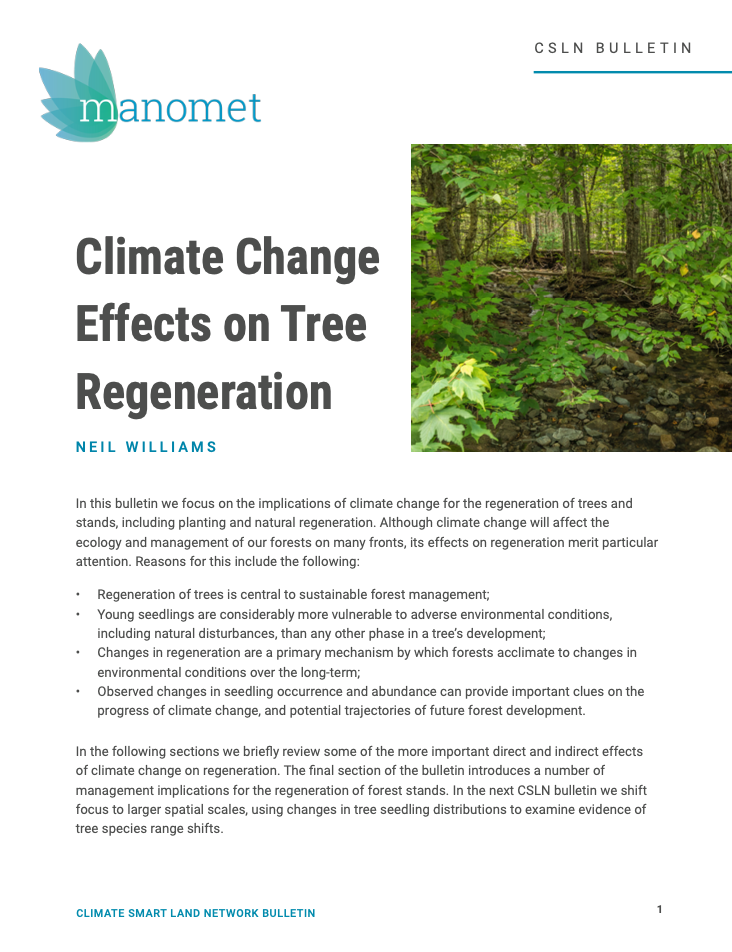Article /
Climate Change Effects on Tree Regeneration

Summary
This resource was submitted by the Climate Risk Institute for theCanAdapt Climate Change Adaptation Community of Practice.
This article is an abridged version of the original text, which can be downloaded from the right-hand column. Please access the original text for more detail, research purposes, full references, or to quote text.
In this bulletin we focus on the implications of climate change for the regeneration of trees and stands, including planting and natural regeneration. Although climate change will affect the ecology and management of our forests on many fronts, its effects on regeneration merit particular attention. Reasons for this include the following:
-
Regeneration of trees is central to sustainable forest management;
-
Young seedlings are considerably more vulnerable to adverse environmental conditions,
including natural disturbances, than any other phase in a tree’s development;
-
Changes in regeneration are a primary mechanism by which forests acclimate to changes in
environmental conditions over the long-term;
-
Observed changes in seedling occurrence and abundance can provide important clues on the
progress of climate change, and potential trajectories of future forest development.
In the following sections we briefly review some of the more important direct and indirect effects of climate change on regeneration. The final section of the bulletin introduces a number ofmanagement implications for the regeneration of forest stands. In the next CSLN bulletin we shift focus to larger spatial scales, using changes in tree seedling distributions to examine evidence of tree species range shifts.
- Climate Smart Land Network Bulletins
- Guiding Principles for Wetland Stewardship and Forest Management: Technical Report
- Sustainable Boreal Forest Management – Challenges and Opportunities for Climate Change Mitigation
- SFI 2022 Forest Management Standard: Section Two
- Virtual reality for education: an immersive trip into the Andean Tropical Mountain Forests
